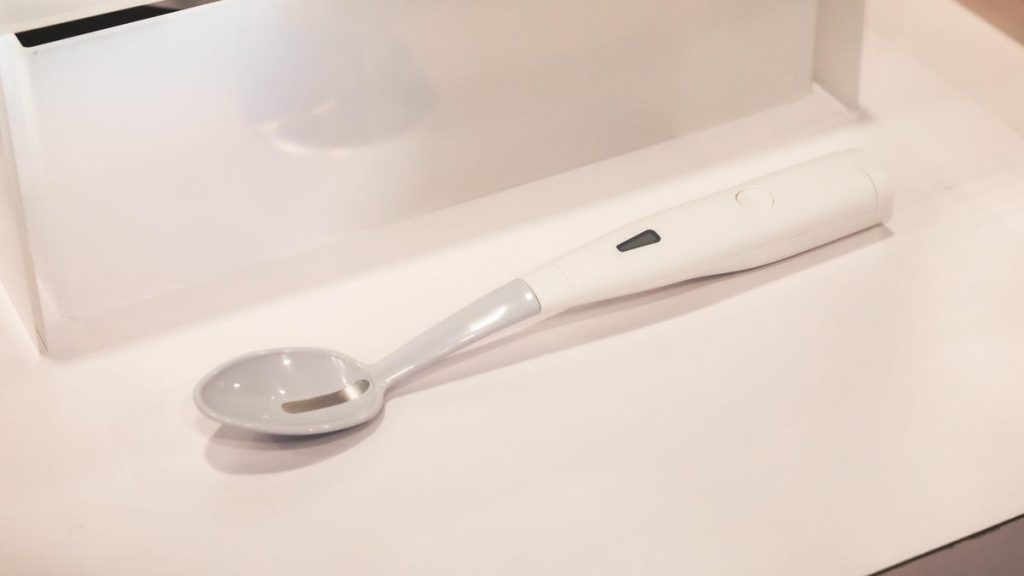The Kirin Electric Salt Spoon, showcased at CES 2025, presents a novel approach to reducing sodium intake without sacrificing the perception of saltiness. This innovative device employs a weak electrical current to stimulate the tongue, creating a sensation of saltiness without actually adding sodium to food. While the concept may seem unusual, it addresses a significant dietary challenge: reducing sodium intake for better health, particularly for those at risk of high blood pressure and heart disease. The spoon aims to make low-sodium diets more palatable, potentially aiding individuals in adhering to healthier eating habits.
The Electric Salt Spoon comprises two main components: the spoon itself and a detachable handle containing the electronic components. The handle features menu buttons to adjust the intensity of the simulated saltiness across four levels. While the spoon’s bulkiness is attributed to the internal batteries and electronics, it raises concerns about practicality. Initial impressions from testing the spoon were lukewarm. While the spoon demonstrably altered the taste of broth used in a demonstration, the effect was subtle, described as making the broth taste “fuller” rather than distinctly saltier. The noticeable difference between intensity levels was minimal. The manufacturer acknowledges variability in individual experiences and across different food types.
The functionality of the Electric Salt Spoon relies on a delicate interplay between the user and the device. Sensors on the back of the handle must be touched to activate the current, while another sensor on the spoon itself must come into contact with the food. This dual-sensor activation can prove cumbersome, requiring a certain degree of dexterity to maintain both contacts simultaneously. The thick handle demands a firm grip, and the need to maintain contact with both sensors can make the process feel awkward, especially during mealtimes. Losing contact with either sensor interrupts the current, effectively eliminating the simulated saltiness.
The Kirin Electric Salt Spoon, while innovative in concept, faces practical challenges in its execution. The complex activation process and the subtle impact on taste raise questions about its overall effectiveness and user-friendliness. While the device’s mission to reduce sodium intake is commendable, its usability limitations could hinder its widespread adoption. The potential for a placebo effect contributing to the perceived taste alteration cannot be disregarded. Further research and user feedback are crucial to assess the spoon’s long-term viability as a dietary tool.
The Electric Salt Spoon’s availability in Japan and its anticipated North American release later in the year bring this unique device closer to consumers. However, the price point of around $125 presents a significant barrier to entry. The cost, coupled with the awkward handling and subtle taste alteration, might deter potential buyers. The device is also unsuitable for individuals using pacemakers or other medical devices due to the electrical current involved. This further limits its target audience and raises safety considerations.
The Kirin Electric Salt Spoon embodies a compelling idea: using technology to enhance healthy eating. However, its current form reveals challenges in terms of user experience and potentially cost-effectiveness. While the device’s ability to simulate saltiness holds promise, its awkward handling, subtle taste enhancement, and high price could restrict its appeal to a niche market. Further development and refinement are crucial to realizing the full potential of this innovative concept and making it a truly practical tool for reducing sodium intake. More research and user feedback are needed to determine its long-term viability and impact on dietary habits. Whether the Electric Salt Spoon can truly revolutionize low-sodium diets remains to be seen.

